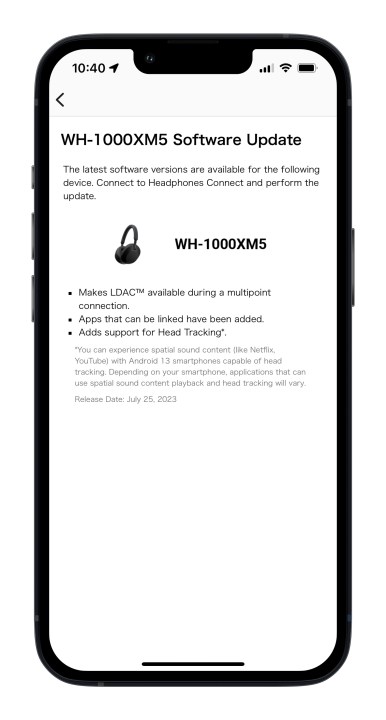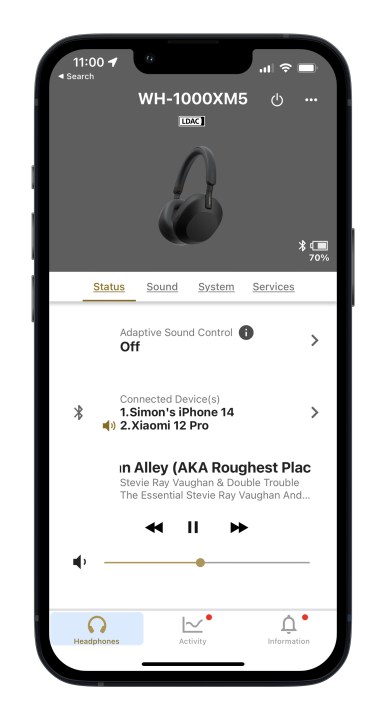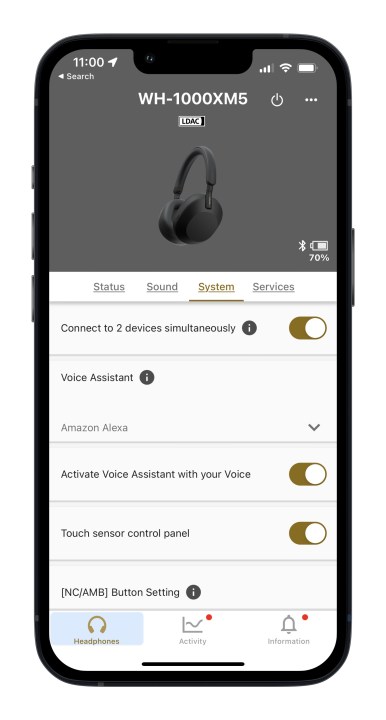
Sony has released a software update for its flagship noise-canceling headphones, the WH-1000XM5, that enables head-tracked spatial audio — a feature the company first debuted this week on its new WF-1000XM5 wireless earbuds.
The update also includes an enhancement of how Bluetooth Multipoint works on these
To get the update, connect your WH-1000XM5 to your smartphone and open the Sony
Head-tracking spatial audio on the WH-1000XM5, as with the WF-1000XM5, is limited at the moment. It only works with select smartphones that are running
At the moment, very few apps fall into this category, but Netflix is one of them. In 2022, Netflix turned on
We’ve asked Sony to provide a list of the compatible
Editors' Recommendations
- Spatial audio via headphones: how science crams 9 speakers and a subwoofer inside your head
- Updating our Sony WF-1000XM5 review
- Leaked images suggests Sony WF-1000XM5 will be smaller, rounder
- Leak: Are these Sony’s WH-1000XM5 headphones?
- Are Technics’ hi-res EAH-A800 the Sony XM4 alternative you’ve been waiting for?







